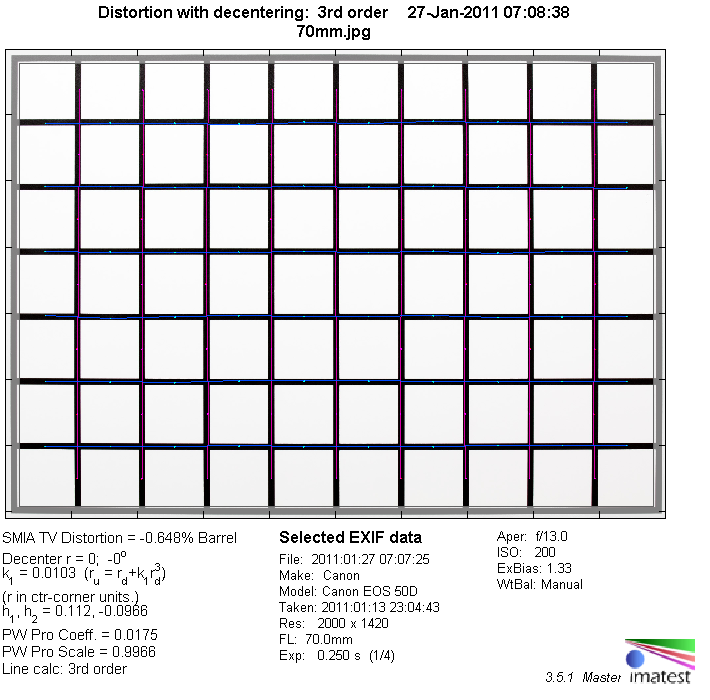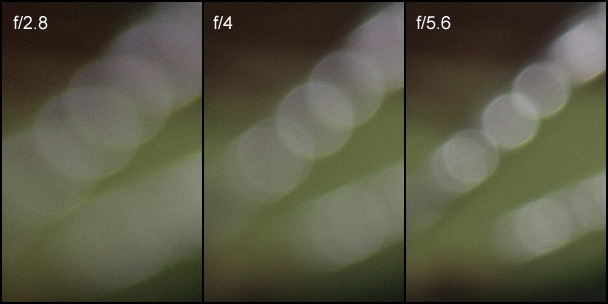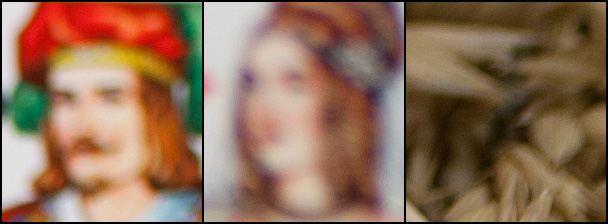|
Tamron AF 70-200mm f/2.8 SP Di LD [IF] macro - APS-C Review / Lab Test - Analysis |
|
Lens Reviews -
Canon EOS (APS-C)
|
|
Page 2 of 2

Distortion
The Tamron SP lens produces a slight amount of barrel distortion at 70mm and slight pincushion distortion in the middle to upper zoom range. You may notice that the tested sample reported "188mm" at its 200mm setting. It is not clear whether this is typical for the design or a zoom limiter
which set in too early on this copy/instance of the lens.
|
Move the mouse cursor over the focal length text marks below to observe the respective distortion
|
| 70mm |
135mm |
200mm |
|

|
Vignetting
The Tamron 70-200mm SP is a full format lens which enjoys a sweet spot advantage when used on APS-C DSLRs.
Consequently there's only a marginal amount of light falloff at 70mm and 135mm. In very critical scenes you
may spot some vignetting at 200mm at f/2.8 but it's really a non-issue otherwise.

MTF (resolution)
The Tamron lens produced quite impressive MTF figures in our lab. The results are pretty uniform across
the range with a generally excellent center performance and very good borders. There's just a little drop in
center quality at 200mm @ f/2.8 which originated primarily in a very slight centering defect at this setting.
The amount of field curvature is marginal. While not formally tested it was quite obvious that the performance
decreases towards very close focus distances at the long end of the zoom range.
Please note that the MTF results are not directly comparable across the different systems!
Below is a simplified summary of the formal findings. The chart shows line widths per picture height (LW/PH) which can be taken as a measure for sharpness.
If you want to know more about the MTF50 figures you may check out the corresponding Imatest Explanations
Chromatic Aberrations
Lateral CAs are generally very well controlled with an average CA width of less than 1px at the image borders. This is usually nothing to worry about in field conditions.

Bokeh
Fast tele zoom lenses should be able to provide a pleasing bokeh (out-of-focus blur) for typical shallow
depth-of-field applications such as portraits. The Tamron lens does not disappoint here. Out-of-focus
highlights are nicely rendered with a circular shape at the relevant aperture settings and a smooth
inner disc zone. The background and foreground blur is very smooth whereas the critical focus transition
zones is a little more nervous. All-in-all a very good characteristic here.

 These sample portions were taken at ~140mm.
These sample portions were taken at ~140mm.
Bokeh Fringing / Longitudinal Chromatic Aberrations (LoCA)
Bokeh fringing is a color fringing effect in the focus transition zone showing a purple halo in front of the focus zone and a green one beyond. The Tamron lens has a rather typical characteristic here with a medium degree of LoCAs at f/2.8. The effect is mostly gone at f/4 and basically negligible at f/5.6. The aspect is more pronounced at 200mm - the sample crops below were taken at 135mm.
Note: the full format test results have been reused here. The samples were taken from the image
center so the findings remain valid here of course.
|
Move the mouse cursor over the f-stop marks below to observe the respective LoCAs
|
| f/2.8 |
f/4 |
f/5.6 |
|

|
Sample Images
There're some sample images in our full format review of the lens.
VerdictThe Tamron AF 70-200mm f/2.8 SP LD Di [IF] macro (*gasp*) is a very capable lens when used on an APS-C DSLR. It provides a very harmonious performance throughout the zoom range. The center quality is generally very high followed by very good borders. Expect a lower performance in close focus scenarios though. Vignetting is usually a non-issue thanks to the sweet spot advantage here. Neither lateral CAs nor distortions are something to worry about from a field perspective. The bokeh is generally very pleasing and bokeh fringing remains comparatively moderate albeit visible at f/2.8.
The build quality is on a high level but it does not reach Canon L level here. The biggest drawback of the lens is its conventional AF. It is not all that bad when using phase-detection AF but it is far from being a speed demon. Contrast AF is downright miserable and manual focusing is cumbersome. A really shining aspect of the Tamron lens is the pricing - it costs only a fraction more than the slower Canon EF 70-200mm f/4 USM L and it's substantially more affordable than the EF 70-200mm f/2.8 USM L. As such it is certainly a value king - at least when used on an APS-C DSLR.
|